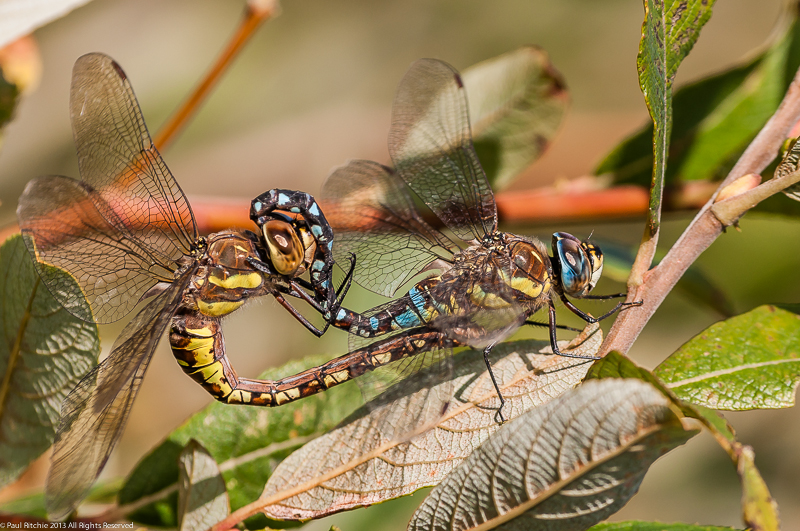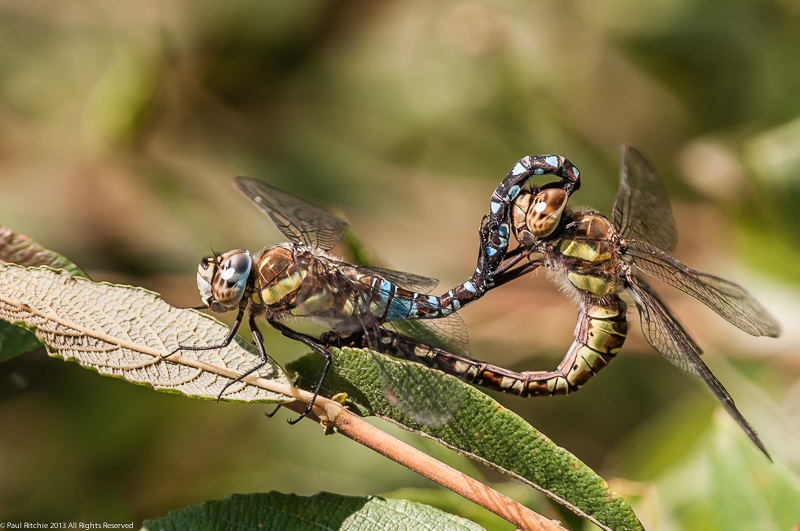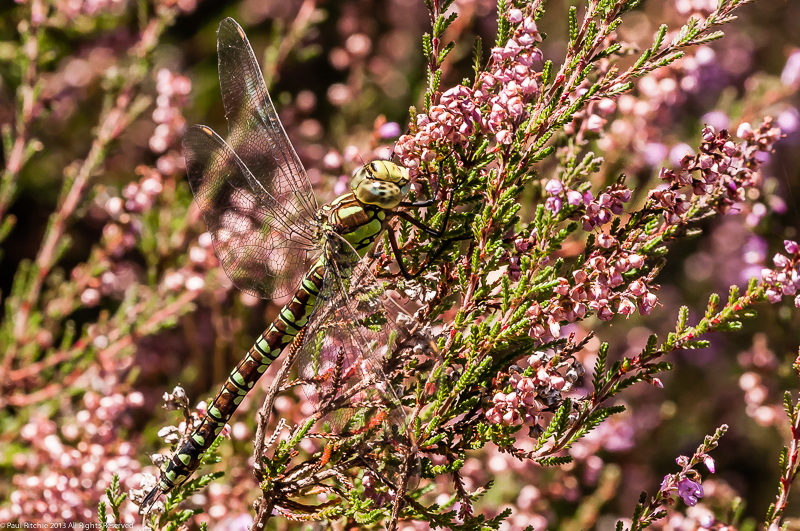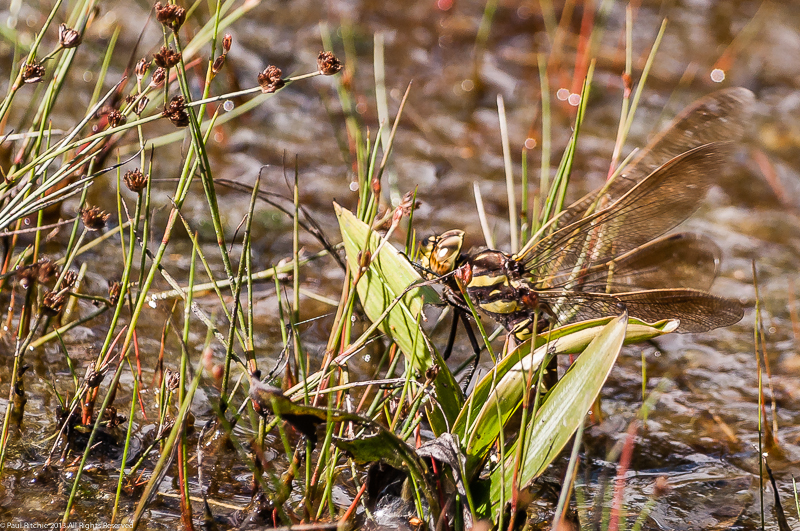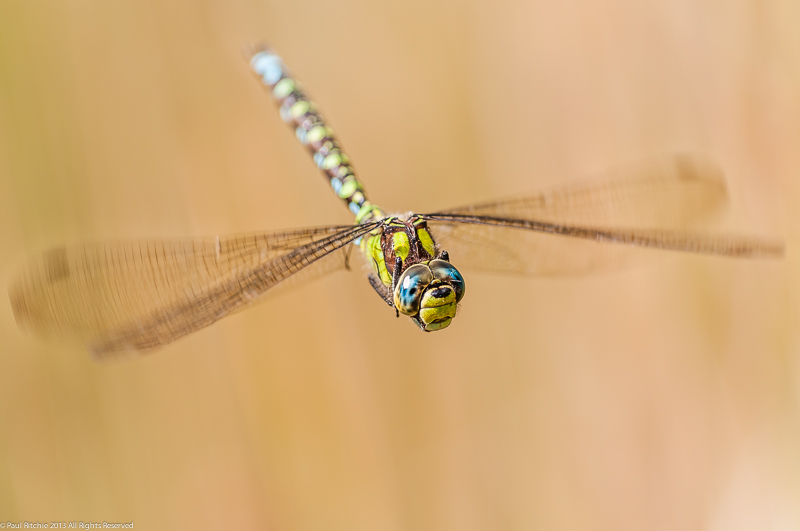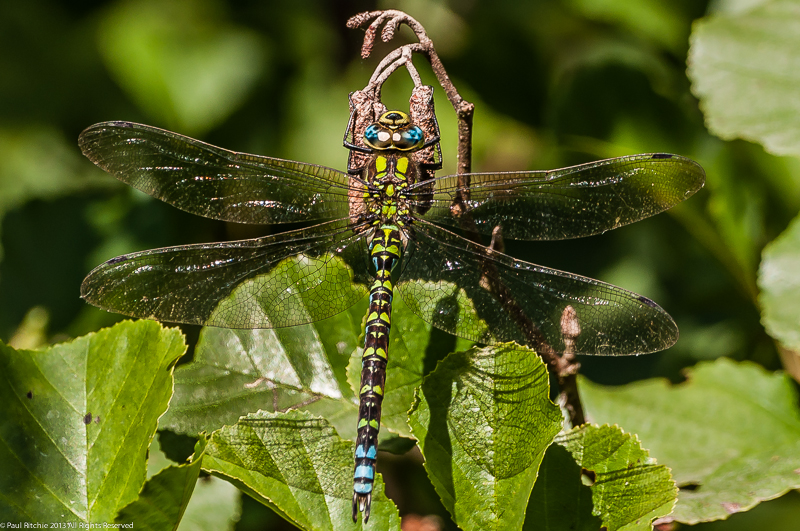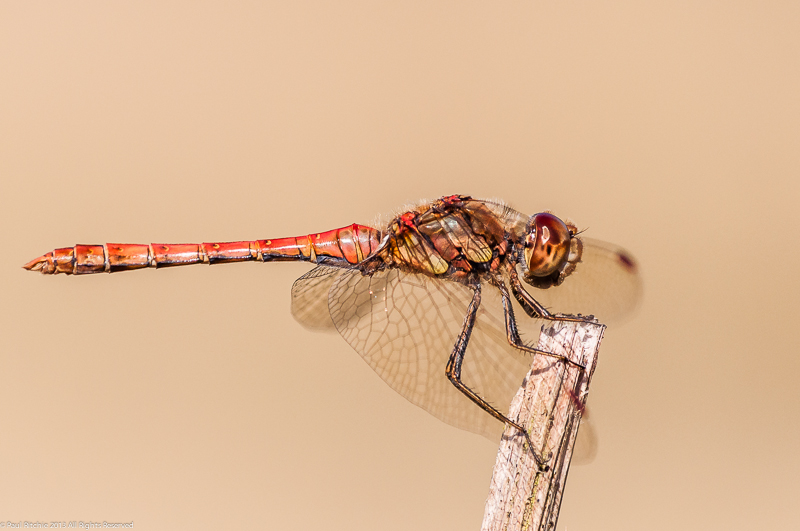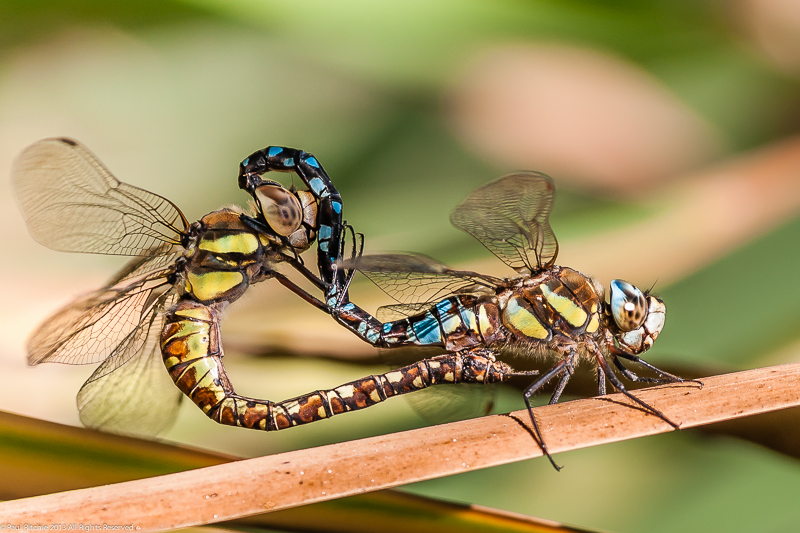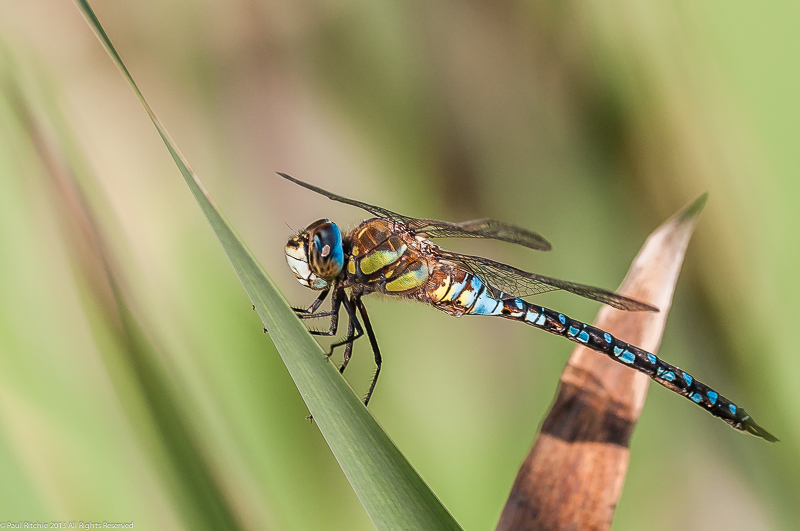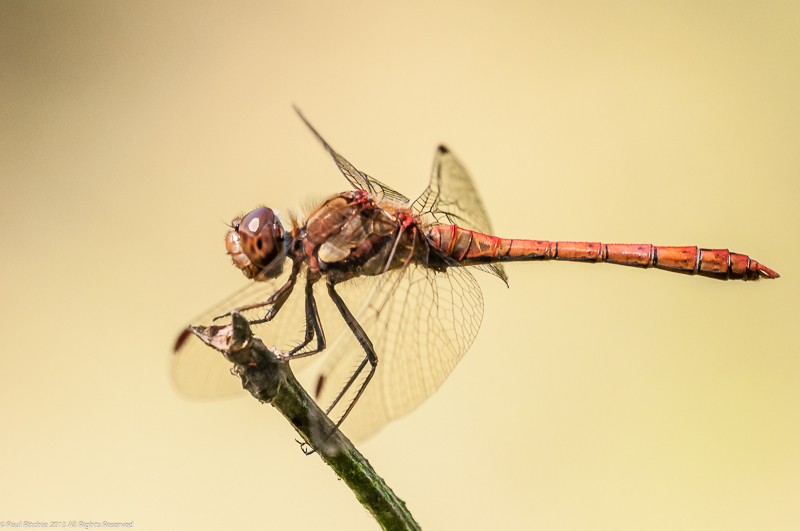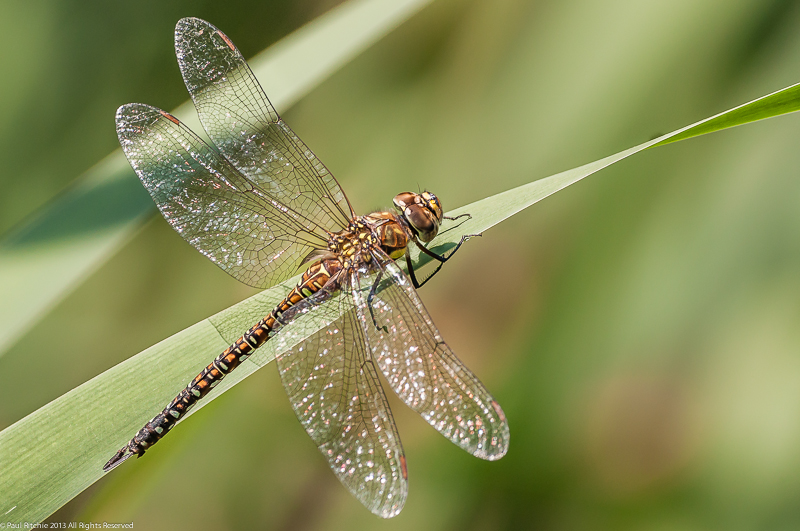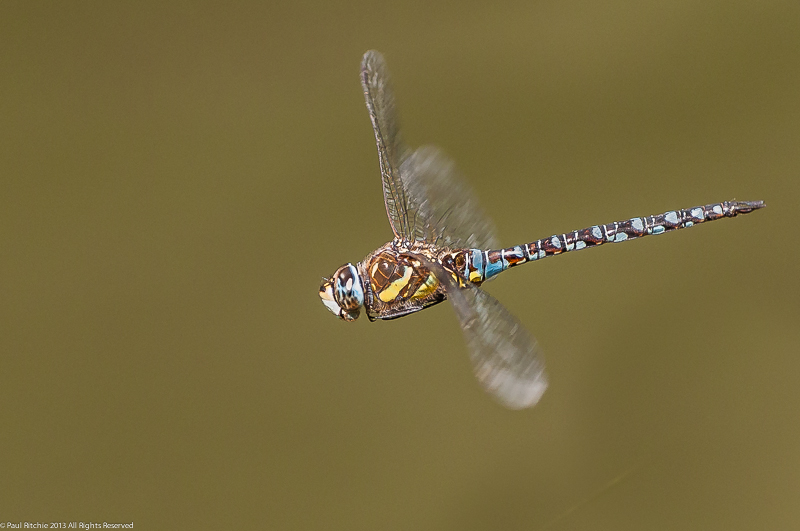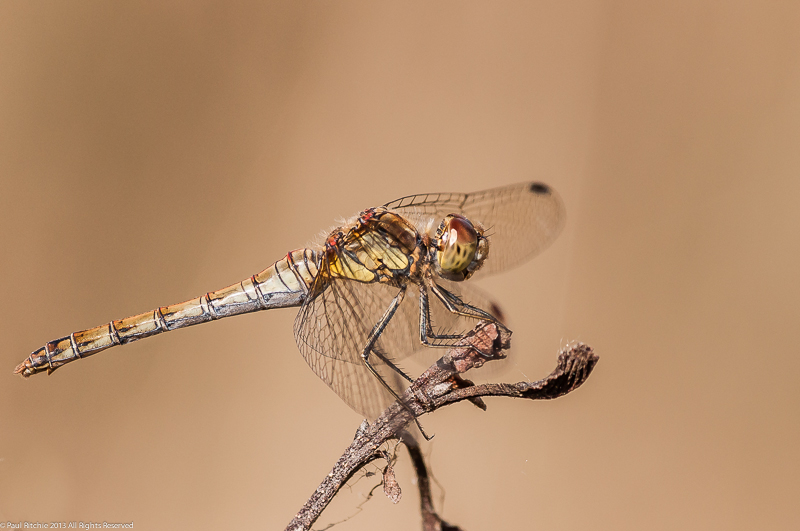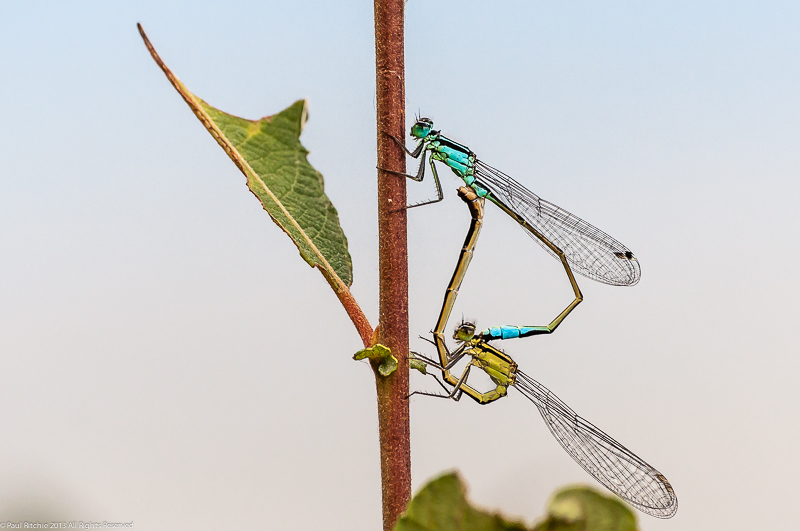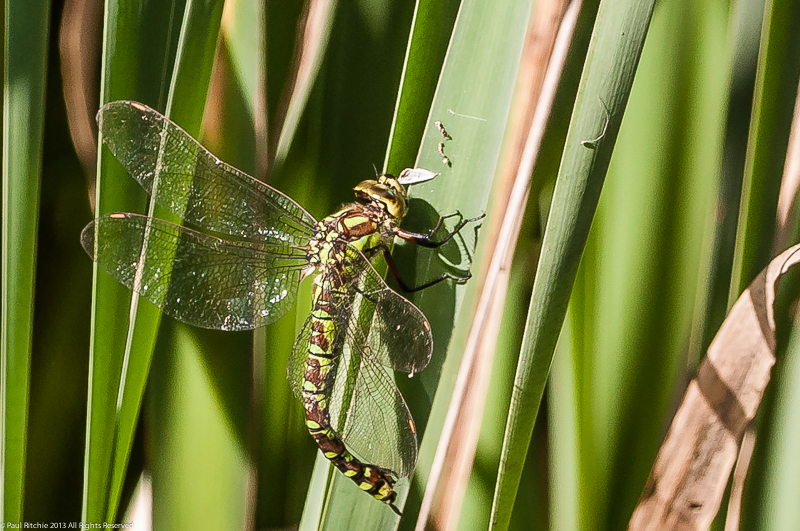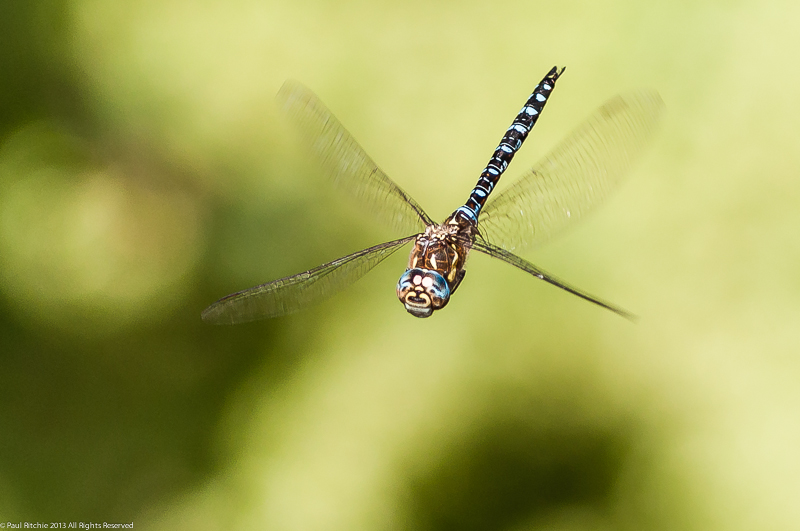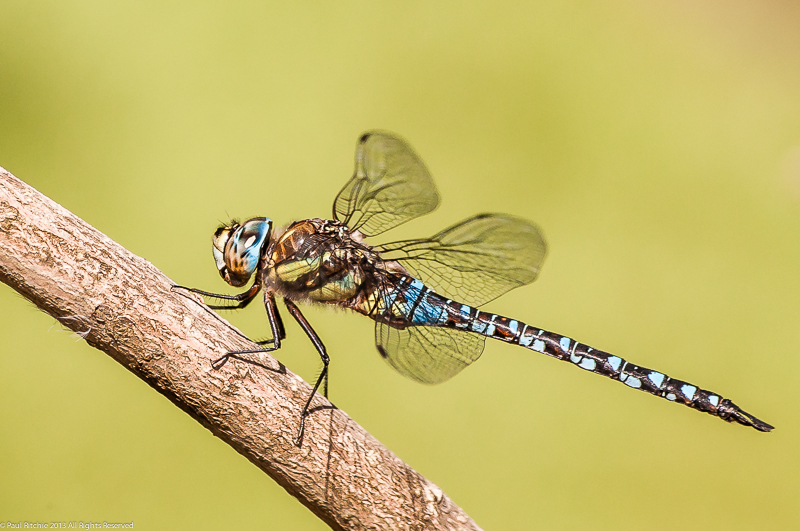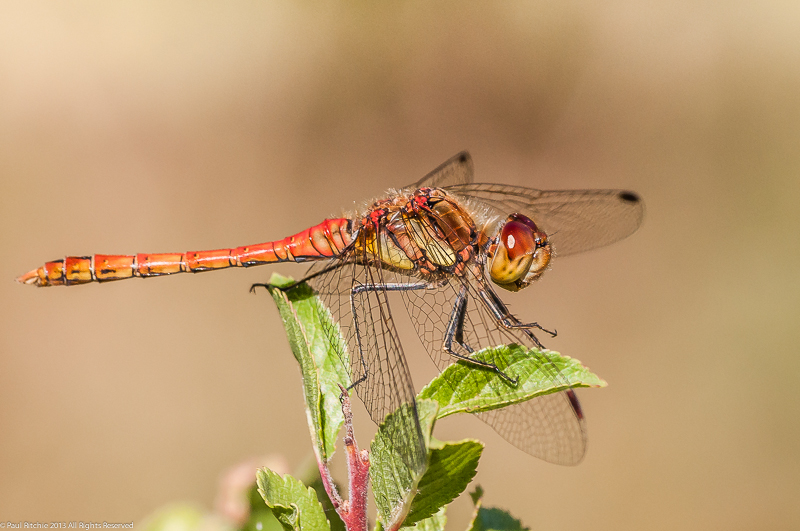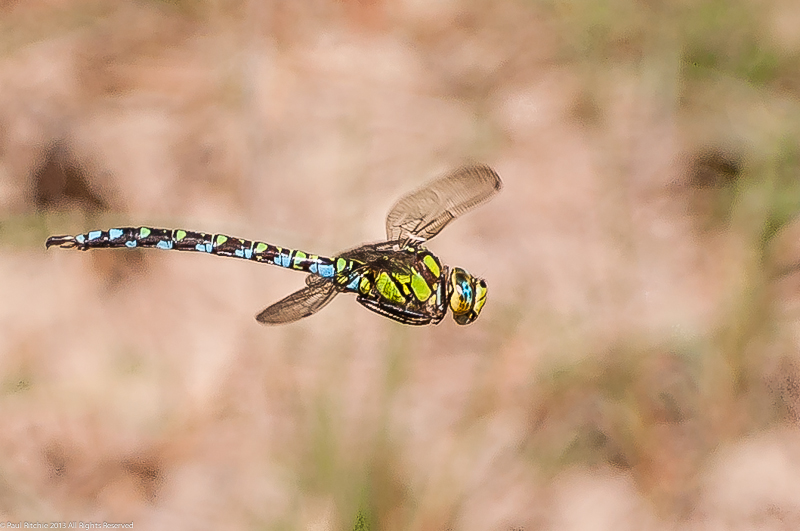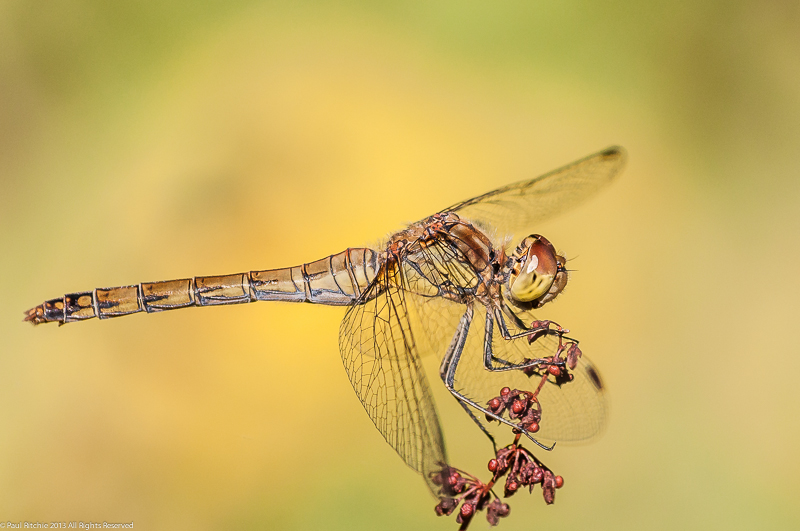A miserable mid-September means it’s been nearly a fortnight since my last posting. Unsurprisingly I’ve been frustrated and anxious that this season would fizzle out way too soon. Many of the casual Odonata enthusiasts have already switched back to birds, and, except for accounts from abroad, the forums are looking very sad with everyone seemingly suffering the hangover from that marvelous summer.
You might think that was to blame, but in reality September usually provides more than enough hawker entertainment to round the summer off. Certainly, for me at least, last season September was a glorious month spent mainly at the pond indulging in in-flight practice and enjoying a good turnout of species.
I’d have thought the recent rains would have replenished the pond a little, but if anything it looks worse than my last visit at the end of August. The only water left is in the northern basin; filthy and stinking from daily pony, cattle and dog bathing, and the associated filth concentrated into a thick, satanic ooze Heston Blumenthal might have trouble recreating.
My heart sank at the sight, but was soon lifted by the sight of a patrolling male Southern Hawker, one of many encountered in my three hour visit. The sun had yet to burn off the remaining mist, so any attempts at in-flight photography was going to have to wait.
I did a tour of the thicket in the hope I might at least find some roosting Common Darters, but not one did I see – nor anything else for that matter. Back at the pond a couple of male Common Darters awoke along the edge of the island, joining the Southern weaving in and out of the reeded edge.
After a few false starts the sun finally broke through and suddenly the Southern Hawkers appeared as if from nowhere, clashing in dispute over who was having first dibs for a patrol. The original individual held his ground for a couple of battles until being chased off by a healthier looking specimen who was far more sociable.
The problem I had was positioning. The only window available over the water which wasn’t at odds with the sun was almost knee deep, so I scouted around for another quarry. Luckily one had chosen to patrol a dry section at the eastern edge; the spot I usually prefer to choose when doing in-flighters.

I relished in my time spent with the Southerns, a species I enjoy bonding with. I’ve missed their usual numbers this season, with only the odd one or two giving sport, so today’s tally of no less than six in residence gave me good reason to stay around.
With a lull in activity due to some cloud cover, I did another scout of the thicket and this time struck lucky with a perched chance.
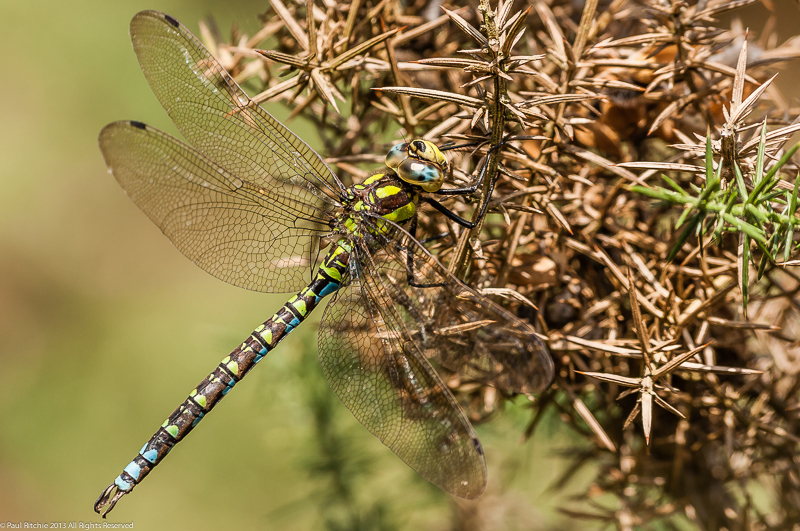
Still no feeding or roosting damsels, Migrants or Common Darters, the latter at least showing a few more individuals on my return to the water. Surprisingly there were two male Southern patrolling one small muddy puddle, another couple in the other section and still my earlier quarry choosing his spot around the gorse bush – all at the same time, and seemingly content to share after the earlier battles.
One of the more sociable individuals gave me my best background of the afternoon when he chose to fly low above the grass, offering some much-needed separation and – more importantly – perfectly lit by direct sunlight.
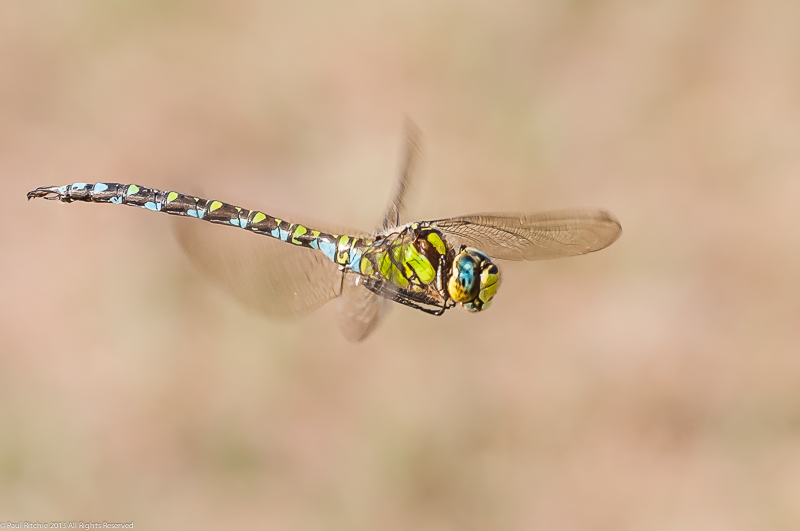
At 3.30pm the clouds obscured the sun again and I felt satiated enough to move on, calling in briefly at Testwood Lakes to observe another male Southern patrolling the gully pond, a male Migrant at the far end of the path by the bird, and a female Southern seemingly about to rest up for the day along the upper path.
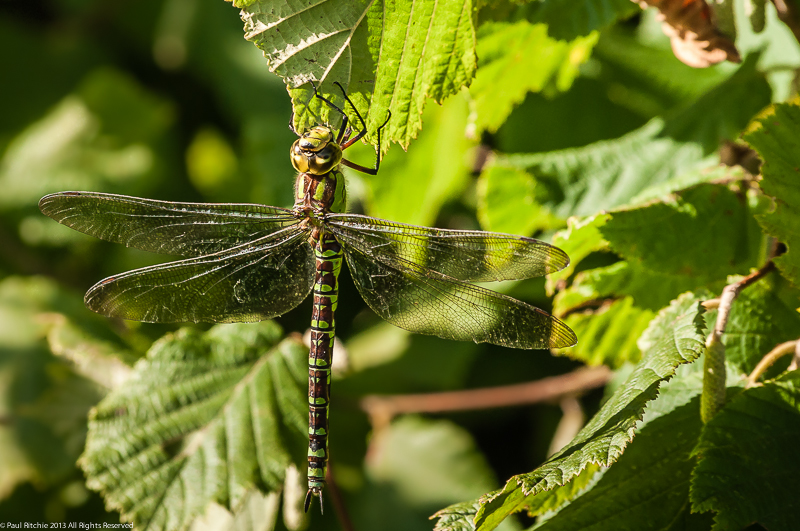
I went out not expecting much and was pleasantly surprised, despite the lack of diversity. For me the chance to enjoy a decent showing of Southern Hawkers for once this year made my day.

